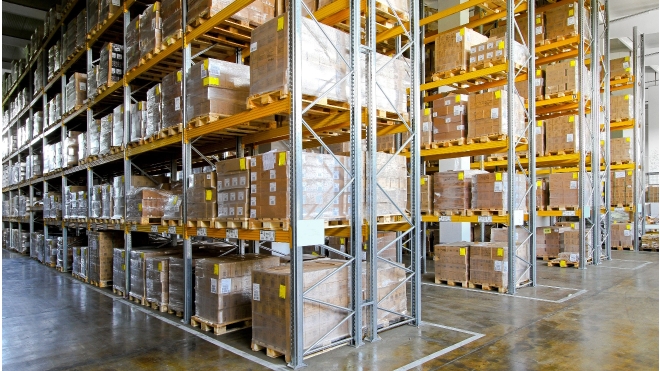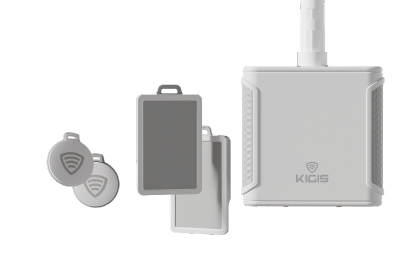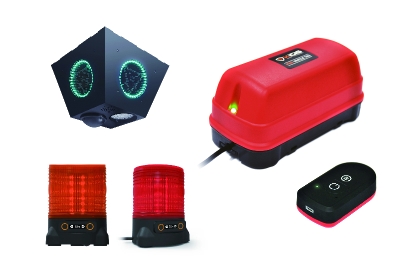KIGIS®,
Leading Ultra-Wideband
Safety Technology
Ultra-wideband (UWB) is the most effective wireless technology
for providing precise ranging and positioning in complex industrial environment.
Importance of Distance Measurement Technology
Distance measurement technology plays an essential role in various industrial sectors.
Accurate location information forms the foundation of logistics management, automotive safety systems, smart home devices, and advanced technologies like augmented reality. With the advancement of the Internet of Things (IoT), the importance of these technologies has grown, contributing to increased efficiency, enhanced safety, and improved user experiences.
Overview of UWB Technology
Ultra-Wideband (UWB) technology is a wireless communication method that uses a very wide bandwidth, enabling extremely precise distance measurement and position tracking.
UWB is recognized for its high-resolution sensing, high data transmission rates, and resistance to interference, making it applicable across a wide range of fields. Additionally, UWB operates on low power, making it ideal for battery-operated mobile and wearable devices.
of UWB
Technology
Definition and History of UWB
UWB refers to a technology that utilizes a very wide frequency bandwidth in communication.
It has been used since the early 20th century in military and radar applications and has recently expanded into commercial and consumer devices. The history of UWB technology is marked by various innovations, with a current focus on precision in distance measurement and data transmission.
How UWB Works
UWB technology operates by emitting pulses across a broad frequency bandwidth for a very short duration.
These pulses are reflected off objects and return to the receiver, where the time difference between emission and arrival is measured to calculate distance. This method allows for extremely precise time measurements and, consequently, highly accurate distance measurements.
Characteristics of UWB Signals
UWB signals use a wide bandwidth, which provides high resolution and penetration capabilities.
This enhances the ability to penetrate through walls and other obstacles and minimizes interference with other wireless signals. Moreover, because UWB signals are emitted in very short pulses, the overall energy consumption is low, allowing for low-power operations.
High Resolution and Precision
One of the major advantages of UWB technology is its high resolution and precision.
UWB can provide centimeter-level accuracy in distance measurements,
which is significantly superior compared to other wireless technologies.
This precision is ideal for indoor positioning, precise distance measurements between objects, and more.

Low Power Consumption
Due to its use of very short pulses for data transmission,
UWB technology has a low overall energy consumption.
This makes UWB technology suitable for battery-operated devices, particularly wearable and mobile devices where battery life is crucial.

Performance in Multipath and NLOS Environments
UWB signals perform well in multipath (where signals reflect off multiple paths before reaching the receiver) and NLOS (Non-Line of Sight) environments.
This is due to UWB's ability to penetrate through walls and other obstacles, making it highly useful in complex indoor environments for accurate location tracking.

Advantages of UWB Technology
in Distance Measurement

01
Precise Distance Measurement and
Position Tracking
UWB technology enables centimeter-level precise distance measurement, facilitating highly accurate position tracking.
This is crucial for indoor navigation, asset tracking, and interactive gaming applications.

02
Superior Performance in Indoor and
Complex Environments
UWB excels in indoor and complex environments. Its signals can penetrate walls and obstacles, enabling accurate indoor positioning, which is essential for indoor navigation, smart building management, and emergency response systems.
Comparison with
Other Technologies
Compared to other distance measurement and location tracking technologies like Wi-Fi, Bluetooth, and GPS, UWB has several distinct advantages.
It offers higher precision and resolution, especially in indoor settings, and supports high data transmission rates and low-power operations.
However, UWB technology may have higher implementation costs and is subject to regulatory restrictions on the available frequency bands worldwide.
Future Outlook of
UWB Technology
UWB technology continues to evolve and is expected to expand its application across various industries in the coming years.
Applications in smart homes, automotive, healthcare, manufacturing, and retail are set to increase, promoting wider adoption of UWB technology.
Moreover, UWB's integration with emerging technologies like augmented and virtual reality will create new use cases.
The future of UWB technology lies in ongoing innovation, standardization efforts, and user adoption, based on the superior performance and diverse advantages it offers.
Meet our
UWB products
The FiRa Consortium is a global industry alliance whose goal is to transform the way people experience interconnectivity and to advocate the widespread adoption of UWB-driven applications. Today, the FiRa Consortium has more than 120 member companies including Apple, Cisco, Google, Qualcomm, Samsung and Kyungwoo Systech.
![IPAS 2.0 [New]](/images/content/uwb_con05_img01.jpg)

